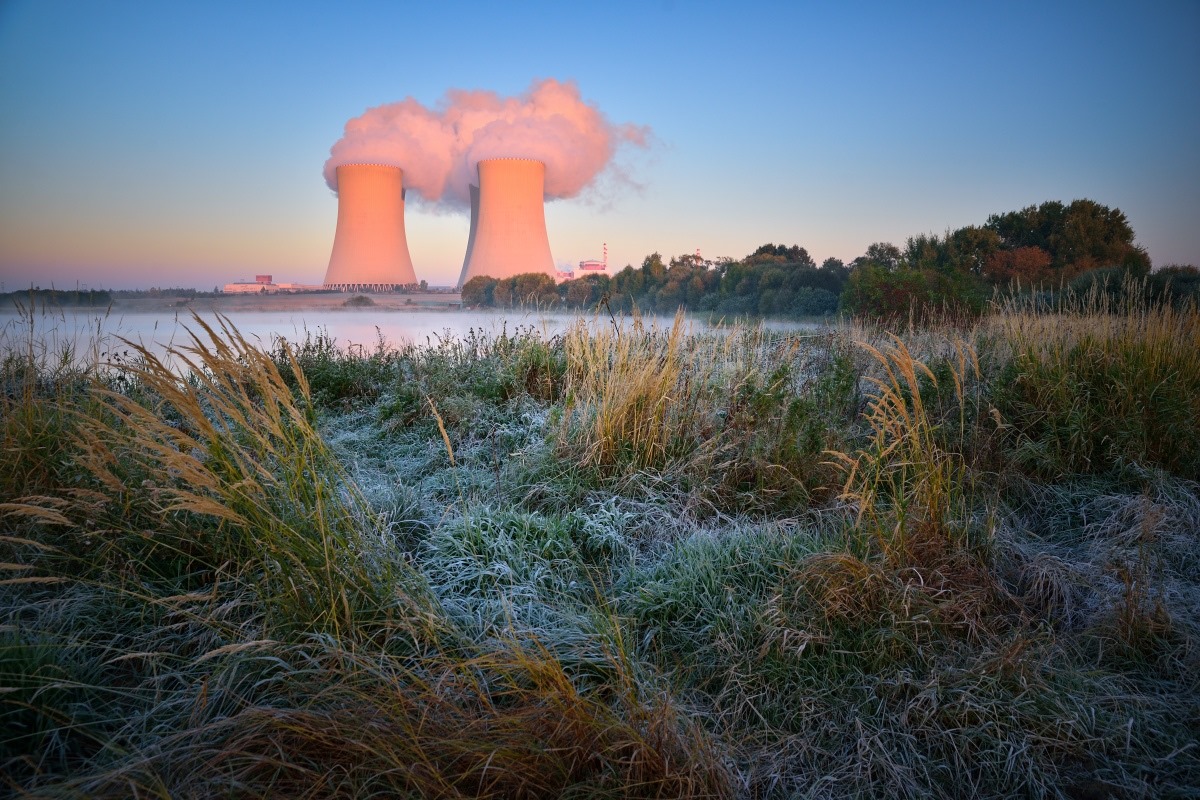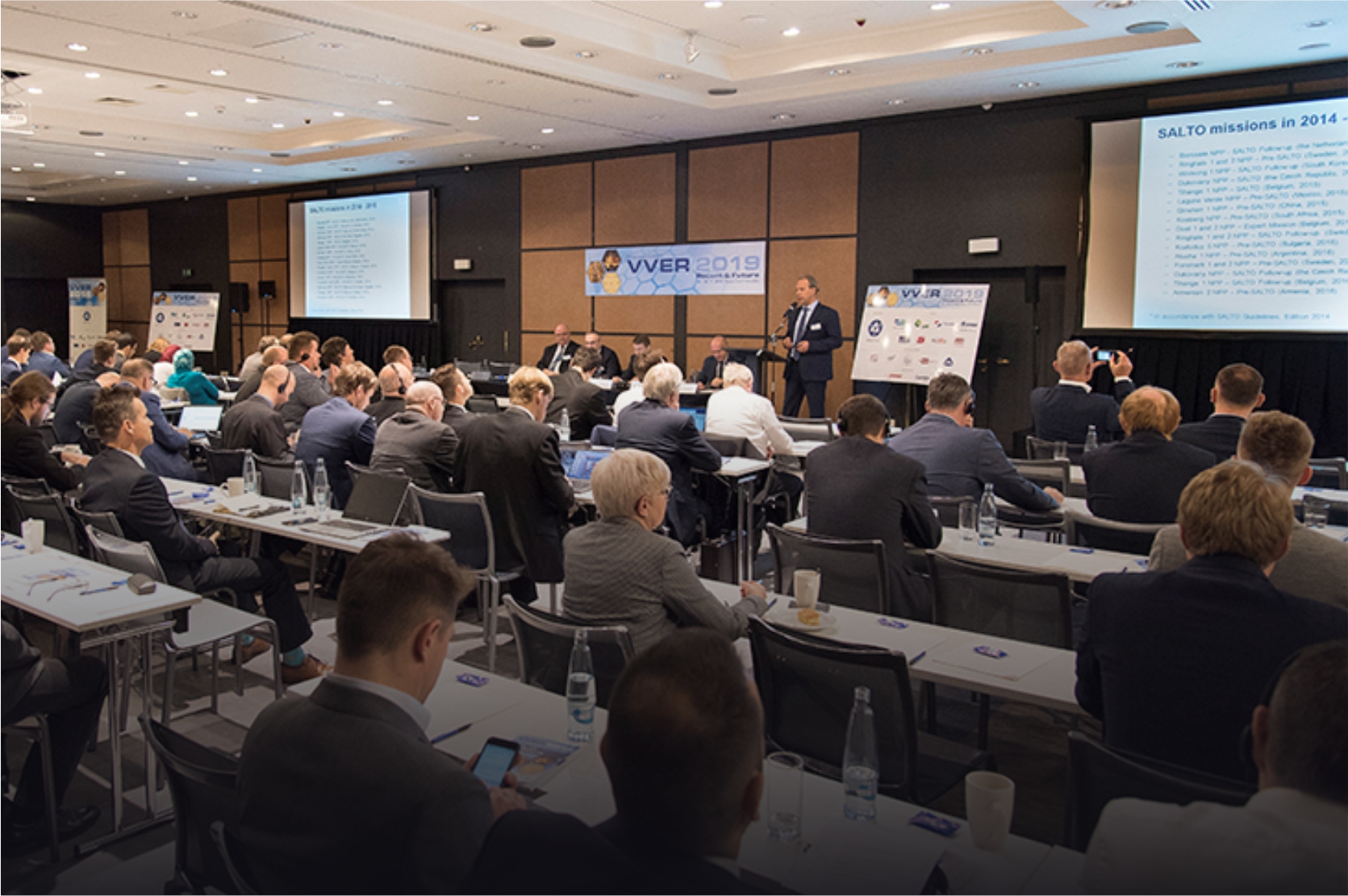
Focus On VVER
back to contentsLonger life span
Reactor life span extension is a tendency that has been taking shape over recent years in the nuclear industry. This topic was discussed at a dedicated session where Artyom Ushakov, Head of Project Management Central and Eastern Europe at Rusatom Service (a Rosatom Group company providing upgrade services to VVER-based nuclear power plants outside Russia), spoke about the company’s expertise in reactor life extension projects both in Russia and abroad. In particular, he told the audience about the reactor vessel annealing technology for VVER-440 and VVER-1000 pressure vessels.
More power
Another modern tendency is growing power capacity of nuclear power plants. According to Leoš Tomíček, Senior Vice President for Nuclear Projects at Rusatom Overseas (a Rosatom Group company promoting NPP construction projects on foreign markets), power capacity of Loviisa NPP was increased from 420 MW to 520 MW. The capacity increase was achieved by upgrading some systems and verifying the existing designs of others with advanced calculation and safety validation techniques. An expert commission confirmed safety of every design change prior to licensing. Other nuclear power plants in Europe and the United States were improved in a similar way. For instance, Hungary’s Paks NPP had its power capacity increased by 10%, and Czech Republic’s Temelin NPP by 4%.
New fuel
The development of new fuels is the area where TVEL (Rosatom’s nuclear fuel manufacturing subsidiary) cooperates extensively with a number of Czech companies (ÚJV Řež, ŠKODA JS, and UJP PRAHA). The parties study fuel compositions and structural materials, validate feasibility of operational parameters and approve the use of new materials developed by TVEL.
Alexander Ugryumov, Vice President for R&D at TVEL, spoke about new fuel grades supplied to the Czech nuclear stations, Temelin and Dukovany. TVSA-T.mod.2 is an upgraded angle-designed fuel assembly for VVER-1000 reactors. Having a higher uranium density and a lower axial load, these assemblies improve stability of the reactor core. At present, TVSA-T.mod.2 assemblies are used at Temelin II and will be offered at the next tender. RK-3+ fuel assemblies for VVER-440 reactors differ from the previous generation assemblies in their design, which improves physical and thermal hydraulic properties of nuclear fuel. Along with other differences, the new modification has a spacer grid with larger spacings and therefore ensures an optimal ratio of water and uranium in the reactor core, boasting more effective fuel utilization in general. As a result, the improved fuel rods help extending refueling intervals.
Advanced materials
Development of new alloys for fuel assemblies is another area of cooperation between Rosatom and the Czech Republic. One of the joint projects entitled Tirclad is devoted to performing in-pile tests on a zirconium-based alloy. Launched in 2012, the project makes part of a broad material studies program financed by TVEL and ČEZ (a diversified group of companies specializing in energy production and distribution). Irradiation of material clusters in Temelin’s VVER-1000 reactor started in 2014 and is to be completed in 2024. Samples from six different clusters will be studied to analyze changes induced by neutron flux. The primary goal of the project is to assess microstructural and bulk properties of materials and correlations between temperature and dose rate. It is assumed that results of the study will be used to license new fuel assembly designs, model cladding behavior during longtime dry storage, validate feasibility of longtime dry storage, and develop new safety criteria.

Reactors of the future
Alexander Katsman, Director of New NPP Operational Readiness Department at Russian nuclear power operator Rosenergoatom, demonstrated slides about the commissioning procedure for new reactor units. The presentation was meant for representatives of those countries that are building or going to build nuclear power plants, including the Czech Republic. According to Viktor Černý, Director at Temelin II, the Czech government plans to approve the final construction program for new reactors at Dukovany by March 2020. Applications for construction permits could be filed the same year.
Small modular reactors (SMR) and medium-sized nuclear power plants (up to 600 MWe) were, perhaps, the key topic of the Prague conference. According to Alexander Katsman, medium-sized NPPs are more interesting than SMRs as they are more likely to meet the requirements for new or replacing power generation and do not need any major transformations of the existing power grid and distribution infrastructure. These nuclear plants were of particular interest for the representatives of Armenia.
There were many questions about specifications and capabilities of floating nuclear power plants (FNPPs). Nikita Rtischev, Senior Manager of Advanced Technology Department at Rusatom Overseas, stressed that a floating nuclear power plant was capable of controlling its output power within a 10% to 100% range of its installed capacity. He also noted that the concept design of an onshore SMR plant with two RITM-200 reactors and a total power capacity of 114 MW had been developed, and the next step was to develop detailed design for a particular site.
New generation of VVER reactors
Researchers from Rosatom’s subsidiary OKB Gidropress will develop a concept design of VVER-S spectral shift control reactor by 2021.
The new reactor design will allow controlling the neutron spectrum and energy-based distribution of neutrons in the reactor core. VVER-S has a number of advantages over VVER-1200. First, VVER-S will consume less fuel while having the same power capacity. Second, VVER-S can operate effectively while being loaded with 100% MOX fuel. Third, VVER-S will be safer as no zirconium is used in the fuel composition. In addition, capital costs of VVER-S construction are expected to be 10% to 15% lower.




